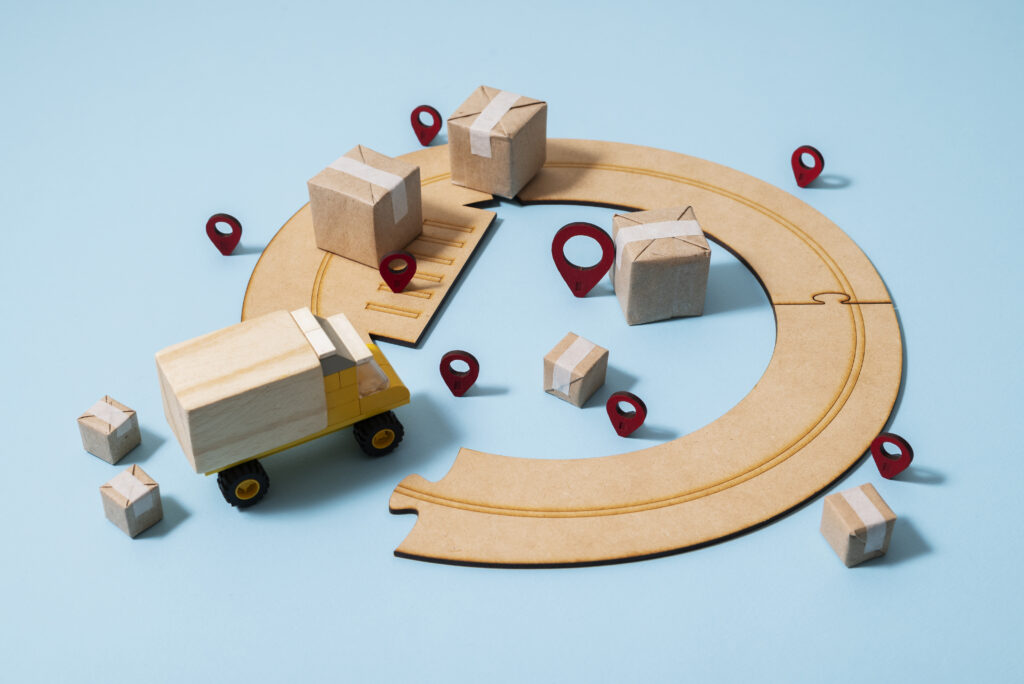A complete guide to understanding supply and demand in business
Supply and demand are the fundamental forces that drive our economy, shaping the prices we encounter daily. Supply refers to how much of a product or service is available, while demand is the level of desire consumers have for it. When a product is scarce but highly sought after, prices tend to rise. Conversely, when there’s an abundance of a product with limited interest, prices usually drop.
These principles aren’t confined to textbooks—they impact everyone. Businesses rely on supply and demand to determine pricing strategies, production levels, and inventory management. For consumers, understanding these dynamics can lead to smarter purchasing decisions, such as knowing when to buy a product at its most affordable price.
Ultimately, supply and demand reveal how markets adapt to changes. Whether it’s the latest tech gadget, seasonal produce, or housing prices, these forces explain the fluctuations we see and help us navigate the economy more effectively.

What is demand?
Demand is the measure of how much people want a product or service and how much they’re willing and able to pay for it. It’s not just about desire—affordability plays a crucial role. For instance, even if someone wants a luxury car, they might not contribute to demand unless they have the means to purchase it.
When people have more disposable income, demand for goods and services often rises because they can afford to spend more. On the other hand, economic downturns or tight finances lead to reduced spending, even on items people still desire. Trends and consumer preferences also significantly influence demand, as popular products or cultural shifts can create surges in interest.
Because demand fluctuates with factors like income levels, tastes, and market trends, it’s a dynamic force that businesses must monitor closely to align their offerings and pricing strategies with consumer behavior.
The law of demand
The law of demand is simple: when prices drop, people want to buy more, and when prices go up, people buy less. It’s a natural reaction. Think about it—if your favorite snack is on sale, you’re likely to buy more of it. But if the price suddenly jumps, you might think twice before buying.
We see this all the time. During big sales events like Black Friday, prices drop, and demand shoots up because everyone wants to get a good deal. On the flip side, when gas prices rise, people often drive less to save money. This basic rule of demand helps us understand why people buy more or less of something based on its price.
Factors influencing demand
Income levels
When people have more money, they tend to buy more; when they have less, they buy less.
Consumer preferences
What’s popular or trendy can cause demand for certain products to rise.
Future expectations
If people think prices will go up later, they might buy more now to save money.
What is supply?

Supply is all about how much of a product or service is available for people to buy. It’s what businesses are ready to sell at different prices. Supply is influenced by things like how much it costs to make something, how good the technology is, and how many other businesses are selling the same thing.
If it gets cheaper or easier to make a product, companies will usually produce more of it, even if the price doesn’t change. Understanding supply helps us see why some products are easy to find while others are harder to get.
The law of supply
The law of supply says that when prices go up, businesses want to sell more. It’s straightforward—higher prices mean businesses can make more profit, so they produce more. For example, if the price of wheat goes up, farmers will plant more wheat to take advantage of the higher prices.
This rule is easy to spot in many areas. In the housing market, when home prices rise, more people decide to sell, which increases the number of homes available.
In the tech world, if a new gadget is super popular and selling at a high price, manufacturers might speed up production to meet the demand. The law of supply shows how prices can influence how much businesses are willing to produce and sell.
Factors influencing supply
Production costs
If it gets cheaper to produce something, companies are likely to supply more of it.
Technology
Better technology can make production faster and cheaper, leading to more supply.
Government policies
Rules, taxes, or subsidies can either encourage businesses to produce more or make them cut back.
Market equilibrium: Where supply meets demand
Market equilibrium is like the sweet spot where everything just works out. It’s the point where the amount of a product people want to buy (demand) matches the amount producers are willing to sell (supply).
When this happens, the price of the product stays stable. No one is left wanting more, and there’s no extra supply just sitting around. This balance keeps the market running smoothly.
Imagine a busy farmers’ market. If a farmer brings exactly the right amount of apples to meet the shoppers’ demands, they sell out without having to drop prices to get rid of extra stock.
Shoppers are happy because they got what they wanted, and the farmers are happy because they sold everything at a fair price. That’s equilibrium in action—everything is balanced, and everyone gets what they need.

Examples of market equilibrium
You can see market equilibrium in many places. Think about the holiday season when toy stores stock up on the hottest new toy. If they guess right and bring in just enough to meet the demand, they sell out at the regular price. But if they bring in too many, they might have to put them on sale to clear out the extra, which means they’ve missed the equilibrium.
In the housing market, when the number of homes for sale matches the number of buyers, prices stay steady. But if there are more houses than buyers, prices might drop until more people are interested.
On the flip side, if there are more buyers than homes available, prices go up until fewer people are willing to pay the higher price. These examples show how equilibrium keeps the market balanced.
Shifts in supply and demand
What causes shifts in demand?
Changes in income
When people experience an increase in income, they generally spend more freely, leading to higher demand for a wide range of products and services. This surge in demand often extends beyond basic needs, as individuals indulge in discretionary spending on luxury or non-essential items. For businesses, this represents an opportunity to expand their offerings or adjust pricing to capitalize on increased consumer activity.
Conversely, when income levels drop, households tend to cut back on expenses, prioritizing necessities over optional purchases. This reduction in spending directly impacts demand, causing it to decrease. For instance, during economic downturns, demand for luxury goods may plummet, while essentials like groceries may see less fluctuation.
These shifts in demand based on income levels highlight the close relationship between economic conditions and consumer behavior. Understanding this dynamic helps businesses prepare for market changes and adapt their strategies to remain competitive and responsive to their customers’ needs.
Population changes
An increase in population naturally drives higher demand for goods and services, as more people need food, housing, clothing, healthcare, and various other products. This growing demand often spurs economic activity, with businesses expanding production to meet the needs of a larger consumer base. As populations grow, especially in urban areas, demand for housing, transportation, and infrastructure also tends to rise, creating opportunities for industries in real estate, construction, and services.
On the flip side, a decline in population or an aging population can lead to a reduction in demand for certain goods and services. For instance, an older population may not need as many baby products, while industries catering to younger consumers, such as tech gadgets or fashion, might experience slower growth. In regions with declining populations, businesses may find it challenging to maintain sales, particularly for goods that rely on a young, growing customer base.
Understanding the effects of population changes on demand helps businesses and policymakers anticipate market trends, plan for the future, and adjust to demographic shifts. As populations evolve, so too do the products and services that are in high demand.
Consumer preferences and trends
Consumer preferences and trends play a significant role in shaping demand. When a new fashion, technology, or lifestyle trend emerges, it can quickly spark a surge in demand for related products. For example, when smartphones with new features are released, demand for the latest models skyrockets, often leading to long lines and fast-selling inventory. Similarly, trends in food or health, such as the rise of plant-based diets or sustainable fashion, can boost demand for specific products while reducing interest in others.
On the other hand, if something falls out of style or is replaced by a newer innovation, demand for it can plummet. For instance, when digital cameras with better features replaced traditional film cameras, demand for film products and cameras dropped. Similarly, the decline in demand for DVDs and Blu-ray discs as streaming services like Netflix and Hulu grew is another example of how shifts in consumer behavior can significantly impact certain industries.
These changes in consumer preferences highlight the dynamic nature of demand, which can fluctuate based on societal shifts, technological advances, and evolving tastes. Businesses must stay in tune with these trends to adapt and adjust their offerings accordingly to meet changing demand patterns.
Expectations about the future
Expectations about future prices and economic conditions can strongly influence consumer behavior and demand. If people believe that prices are going to rise in the future, they are likely to buy more of a product now, in anticipation of higher costs down the line. This behavior can lead to a temporary spike in demand. For example, if there’s news of a potential price increase for gas, consumers might rush to fill their tanks before the price hikes, driving up demand in the short term.
Conversely, if consumers expect prices to drop in the future, or if they anticipate a recession or economic downturn, they may hold off on purchases, reducing current demand. This is because they might be uncertain about their financial situation and prefer to wait for lower prices. For instance, during times of economic uncertainty or when consumers expect future discounts, they might delay purchasing items like cars or electronics, causing a dip in demand in the present.
These shifts in demand based on expectations show how closely linked consumer confidence, perceptions of the economy, and future price movements are to current market activity.
What causes shifts in supply?

Production costs
When the costs to produce something—like raw materials or labor—increase, producers might cut back on how much they supply because it’s more expensive to make the product. On the other hand, if production costs drop, supply can increase as it becomes cheaper to produce.
Technological advancements
New technology can make production faster, cheaper, and more efficient. When this happens, businesses can produce more at a lower cost, which increases supply. For example, advancements in manufacturing can lead to a greater supply of goods at lower prices.
Government regulations
Regulations, taxes, and subsidies can all influence supply. For instance, a new tax on carbon emissions might make it more expensive to produce certain goods, reducing supply. Conversely, a government subsidy might encourage more production, increasing supply.
Number of suppliers
If more companies enter the market, the overall supply of a product increases. However, if businesses close or leave the market, supply can decrease, which might lead to higher prices. The number of suppliers plays a big role in determining overall supply levels.
Impact of shifts on market equilibrium
When supply or demand shifts, it can throw the market out of balance. Prices will adjust—either up or down—until the market finds a new equilibrium. This process keeps happening over time, with prices moving as supply and demand change.
Supply and demand in everyday life
Supply and demand aren’t just fancy economic terms; they’re at work every day in our lives. They explain why groceries might be cheaper in the summer when there’s a lot of fresh produce or why gas prices might spike during a shortage.
When supply and demand are balanced, prices stay steady. But when something throws that balance off—like a bad harvest or an increase in demand—prices react accordingly.
Supply and demand in business
Businesses live and breathe supply and demand. They use these principles to decide what products to offer, how much to charge, and when to ramp up or slow down production. If demand for a product is high and supply is low, a business might raise prices or increase production to maximize profits.
On the flip side, if there’s too much supply and not enough demand, they might drop prices or cut back on production to avoid losses. Understanding these dynamics helps businesses stay competitive and make smart decisions in a constantly changing market.
The bottom line
Supply and demand are the driving forces behind how markets work. They determine prices, influence business decisions, and affect our daily lives. By understanding how these forces interact, we can better navigate the economic world, whether we’re making purchases, running a business, or simply observing market trends.
FAQs
What is an example of supply and demand?
A simple example is during a heatwave when the demand for ice cream goes up. If the supply of ice cream stays the same, prices might increase because more people want it than what’s available.
How to calculate supply and demand?
To calculate supply, you look at how much of a product is available at different prices. For demand, you analyze how much people are willing to buy at various price points. Supply and demand curves can be plotted to find where they intersect—this is the equilibrium price.
What is a supply and demand diagram?
A supply and demand diagram is a graph that shows the relationship between the price of a product and the quantity supplied and demanded. The point where the supply and demand curves meet is called the equilibrium, where the market is balanced.
How do you identify supply and demand?
You identify supply by looking at how much of a product is available in the market. Demand is identified by seeing how much people are willing to buy at different prices. Observing these factors helps you understand how prices are determined.
Why is supply and demand important?
Supply and demand are crucial because they determine the prices of goods and services. They help businesses decide how much to produce, and consumers make informed purchasing decisions, ensuring that markets function efficiently.


